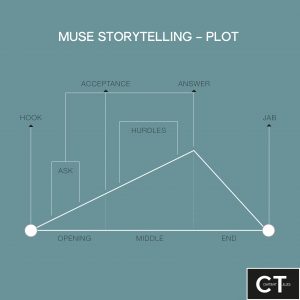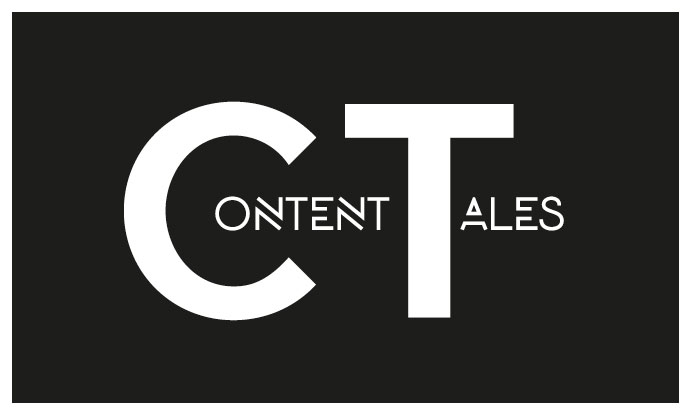READING TIME: 6 MINUTES
Creating an engaging brand commercial is mostly time consuming and requires expensive video and storytelling experts. For marketers and brand builder it’s a balancing act to create a brand movie that on the one hand engages users and on the other hand is appreciated by the management. Imagine an easy applicable video storytelling formula, which guides you through the whole process – starting with the kick-off meeting and ending with the video approval. Sounds good? All you have to do is: read on.
The following guide provides you with a holistic and universal workflow scheme for great video storytelling and is structured in 7 easy steps.
The Kick-off workshop with the management
A key success factor of every brand commercial is to get decision makers on board early. When I did the brand movie for Anton Paar, the starting point was a workshop with the CEO. This was crucial for the whole project, because Anton Paar is a family-operated business and decision makers (family members) have a close emotional relation to the brand. So before you are going to make a brand video, which reflects the brand’s value proposition and core values, make sure you consider the management’s perspectives. This prevents endless correction loops afterwards and is the basis for the video storytelling concept.
Time with the management is highly limited. In order to not waste it, I provide you with my top 5 questions for the kick-off workshop:
1. What is the company’s purpose and overall aim? For what bigger cause employees get out of their beds every morning?
2. What is it that defines the brand at heart? Describe the brand’s DNA with regard to the following points:
- Strategic target audience: Which specific target group does the brand commercial should address?
- Brand personality: If the brand was a human being, how could its character be described?
- Product attributes: What is it that makes our products/solutions unique?
- Brand beliefs: What are the brand’s guiding principles and morals?
3. What are the motives and driving factors of the target group, to which the commercial and video storytelling concept should address?
4. What is the main communication message?
5. Can you name brand ambassadors (customers, employees etc.), who perfectly embody the brand’s personality and core values.
Of course there are many other questions, which may come to your mind spontaneously. Ask as much as you can – the time with the CEO is limited anyway.
Discuss workshop results and link them to the brand architecture
This step is probably the most important one: After the workshop you and your team need to organize the whole load of content. This not only means to cluster information snippets but also to cut them down. The best way to do so is to take your brand architecture (if you have one) and to match the information you’ve collected with the one of your brand framework. My favorite brand model for this purpose is the cross-based brand model, to which I was introduced by Franz Drack, Brand Director EUC Lego.

As this article is not about strategic brand management, I won’t explain this model in detail. Nevertheless I need to mention it, because when it comes to video storytelling – especially in regard to brand commercials – this framework can be really helpful. The clue is that the questions, you addressed to the management during the workshop, are also necessary in order to use this brand model.
- Question 1: Refers to the “Brand Vision”
- Question 2: Refers to the “Brand Essence”
- Question 3: Refers to the “Human Insight”
- Question 4: Refers to the “Brand Crusade”
- Question 5: Refers to the “Brand Crusaders”
When it comes to the brand commercial’s conception stages, these 5 fields are highly useful for your video storytelling concept. Why? Because many renown storytelling techniques, are based on this sort of information.
The video storytelling concept
There are many different formulas for creating a strong and engaging story line. I’d like to introduce you to my favorite 3:
- “The Golden Circle”
- “The bridge”
- “The Muse Storytelling Concept”
“The Golden Circle”
Simon Sinek is the father of the golden circle storytelling formula. His TED talk on that topic already earned 31 Million views. Here’s how it works and how you can adopt it for video storytelling:
- In the first third of your story, you answer the “WHY” and describe, why your business exists
- The second third is dedicated to the “HOW” and describes how the company fulfills its “WHY
- The last third is all about the “WHAT” and addresses to the actions, a company takes to fulfill its “WHY”.
This structure sound familiar to you. Yes it does. It’s the same principle, as we have applied for our brand architecture.
- WHY – HUMAN INSIGHT
- HOW – BRAND ESSENCE
- WHAT – BRAND CRUSADE
The bottom line is that “people don’t buy by what you do, but by why you do it” (Simon Sinek). Having this principle in mind is a key success factor for inspiring video storytelling.
“The bridge”
The concept of this storytelling scheme is simple and structured into three main parts:
- You describe a certain problem or pain point, which is relevant for your target audience
- You contrast this problem by describing a perfect situation, where this specific problem is solved
- In the third part you tell your audience how to get there
“The Muse Storytelling Concept”
The last storytelling formula I’d like to present you is in my opinion the most comprehensive and detailed one. I was introduced to it at FH JOANNEUM’s master’s degree “Content Strategy” and taught by Hubert Weitzer. Also this scheme is linked to the information of our brand model. The concept is based on the 4 P’s:
- People
- Places
- Purpose
- Plot
The main idea is to define a clear purpose for your story (BRAND VISION and HUMAN INSIGHT). After doing so, you search for a main character (BRAND CRUSADER), who symptomatically stands for your brand (BRAND ESSENCE) and contributes to the purpose of your story. “Show don’t tell” is the key motto of Hubert Weitzer and refers to the importance of the right places, which are shown in a video. The locations you are going to use need to have a deep connection or meaning for your main character. This could be a place, where your main character can truly express himself for example.
The plot gives your story the right structure. According to Muse, it need’s to contain the following elements:
- A hook: The hook generates curiosity by showing something unexpected
- An ask: The main ask is derived from the purpose and is the beginning of the main character’s journey
- An acceptance: The acceptance is an explanation, why the main character want’s to achieve a certain goal and how he’s empowered to do so
- An answer: The answer represents the solution, how the main character reached his goal
- Hurdles: Obstacles ensure excitement, emotions, engagement and improve the viewer’s stickiness
- A Jab: The jab is something like the bottom line or the conclusion of a story and provides a certain learning for the viewer

For a more detailed explanation of the Muse storytelling process, you may be interested in my step-by-step guide for brand storytelling.
Furthermore the following SlideShare presentation gives you an idea of how to apply the Muse technique for video storytelling. During the realization of Anton Paar’s brand commercial, it served my video team as a basic tool. Based on this storytelling concept, the video director created the so-called preview cut.
Make a preview cut
Before you hire an expensive production team, it makes sense to roughly check, whether your story works, or needs a revision. Ask your video team for a preview cut, which only contains found footage. Don’t expect something fancy from this work step, it’s rather your imagination capability, which is in demand.
Based on this preview cut, you identify weak points of your story design – without causing costs or correction loops. To not adorn myself with borrowed plumes, I have to say that I was introduced to this technique by my colleague Philipp Rudler. He is the leader of the video team in my department.
Create a shot list
The preview cut is your guiding source when it comes to choosing the right scenes and serves as the most important tool for step 5: the shot list creation. In this step the video director creates a list, which clearly specifies which shots are going to be taken during the video shoot. As soon as the shot list is finished, you have a clear idea, which resources (equipment, crew members etc.) are necessary in order to realize your brand commercial.
Build your team
A really important lesson, I’ve learned during the last video productions, is that a small team works straightforward, while too many cooks/team members spoil the broth. Managing a video production is not about considering everybody’s opinions, but more about creative leadership, strict project management and a clear idea of the end result. What you need is a director of video, storytelling experts (one or two), a project manager (it’s mostly you) and a production crew (camera, sound, set runner, set design, make-up etc.).
Shoot, cut and post production
Usually this work step is relevant for your video director as well as the production crew. It’s a lot of work and requires extensive know-how, but is not the main object of this article.
For this reason I’d like to finish my post at this point and hope that I was able to provide you with a good primer. Let me know if you have any questions and drop me a comment below. Also stay updated and subscribe to my newsletter. Enjoy your next video storytelling project and don’t forget: Show, don’t tell.




Be First to Comment